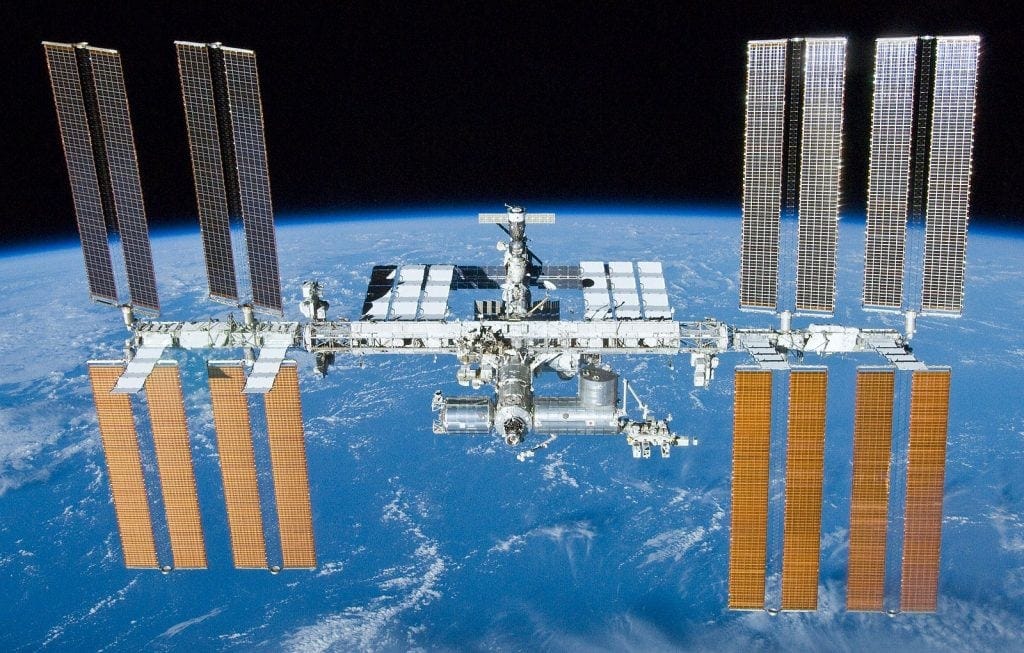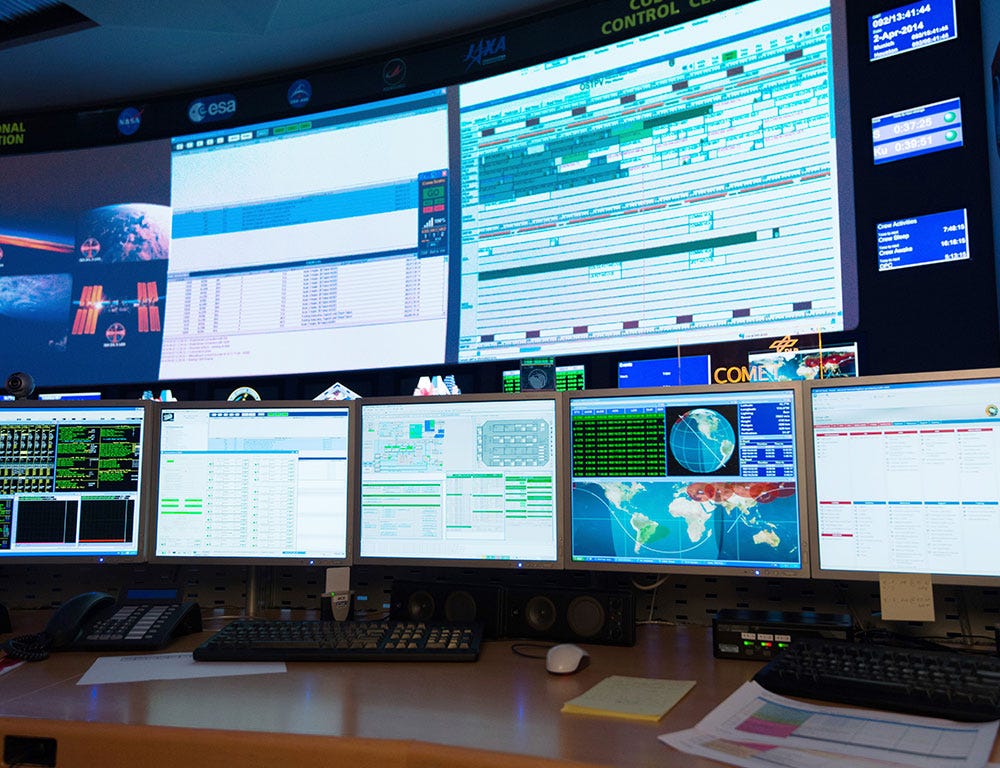Software Glitches in the ISS
The Invisible Crew
On July 18, 2024, a major IT outage impacted businesses globally. While initially mistaken as a Microsoft issue, the culprit was a faulty software update from CrowdStrike, a cybersecurity company that provides antivirus software to Microsoft for Windows devices. A defect in a single CrowdStrike content update for Windows Defender caused crashes on affected machines.
Let’s get to know about software issues faced in space, particularly International Space Station.
The International Space Station (ISS) is a marvel of human ingenuity, a testament to international collaboration pushing the boundaries of space exploration. But this technological marvel wouldn't exist without the silent crew working tirelessly behind the scenes: the software. Millions of lines of code orchestrate the symphony of systems that keep the ISS operational, ensure astronaut safety, and facilitate groundbreaking scientific research. This article delves into the intricate world of ISS software, exploring the diverse modules it comprises, the challenges encountered, and the ingenuity displayed by astronauts in overcoming them.
A Glimpse into ISS Software
The software on the ISS isn't a monolithic entity. Instead, it's a collection of highly specialized modules, each designed to manage specific tasks. Here's a breakdown of some key players:
Command and Control (C&C): This acts as the central nervous system, monitoring the health and status of all ISS systems. C&C software collects data from sensors, transmits it to ground control for analysis, and sends commands back to the ISS to adjust systems as needed.
Environmental Control and Life Support (ECLS): This critical software ensures a breathable atmosphere and comfortable living conditions for astronauts. It manages oxygen production, carbon dioxide removal, temperature and humidity control, and waste management.
Guidance, Navigation, and Control (GNC): This module takes the helm, controlling the ISS's orientation and position. It processes data from gyroscopes, star trackers, and GPS to determine the station's location and attitude, making necessary adjustments to keep it pointed in the right direction.
Power Management and Distribution (PMAD): This software ensures a steady flow of power throughout the station. It controls the solar arrays, battery systems, and power distribution units, ensuring efficient energy utilization.
Payload Operations (PO): This module manages the vast array of scientific experiments conducted on the ISS. It controls the power supply, data acquisition, and communication with these experiments, enabling astronauts to conduct research in microgravity.
Overcoming Software Challenges
Despite rigorous testing on Earth, software glitches can and do occur in the harsh environment of space. Here are some real-life examples of software problems encountered on the ISS and how the astronauts tackled them:
1. Communication Loss (2001)
Incident: On February 21, 2001, the ISS experienced a major communication loss with ground control.
Cause: The incident was caused by a combination of a software issue and a solar storm that affected the primary communication link. The software error caused the station’s primary command and control computers to reboot, leading to a temporary loss of communication.
Impact: Astronauts had to rely on backup communication systems and pre-programmed procedures until the issue was resolved.
2. Russian Segment Software Glitch (2010)
Incident: In August 2010, a software glitch affected the Russian segment of the ISS.
Cause: The glitch was related to an update in the software controlling the segment’s computers, which caused a failure in the data relay system.
Impact: This issue required astronauts to switch to a backup system while ground control diagnosed and fixed the software problem.
3. Multiplexer/Demultiplexer (MDM) Failure (2014)
Incident: In April 2014, a multiplexer/demultiplexer (MDM) computer on the ISS failed.
Cause: The failure was due to a hardware issue, but the subsequent software response protocols had to be carefully managed to switch operations to a backup unit.
Impact: This required a spacewalk to replace the failed MDM unit, highlighting the critical role of software in managing hardware failures.
4. Solar Array Deployment Issue (2007)
Incident: While not strictly a software glitch, the incident in November 2007 where a solar array partially tore during deployment had software implications.
Cause: The incident was primarily mechanical, but software controls for the array deployment had to be managed to prevent further damage.
Impact: Astronauts conducted a spacewalk to repair the array. Software played a key role in ensuring the array’s systems were safe and stable during the repair.
5. Kurs Docking System Glitch (2012)
Incident: In October 2012, the Kurs automated docking system on a Progress resupply vehicle experienced a software glitch.
Cause: The glitch was due to a software error in the automated docking sequence.
Impact: The Progress vehicle had to switch to a manual docking procedure, which was successfully completed by the crew.
6. Data Handling System Reboot (2019)
Incident: In January 2019, a data handling system on the ISS unexpectedly rebooted.
Cause: The reboot was caused by a software error in the central computer system.
Impact: This required the crew to manually reboot the system and verify its operational status. It highlighted the need for robust software error-handling protocols.
7. Node 3 Software Update Issue (2019)
Incident: In July 2019, during a software update, Node 3 (Tranquility) experienced issues with its new software load.
Cause: The issue was related to compatibility problems with the updated software.
Impact: The crew and ground control worked together to roll back the software to a previous stable version and plan a new update strategy.
General Causes of Software Glitches on the ISS
Software Updates: Updates to onboard software can sometimes introduce new bugs or compatibility issues.
Radiation Effects: High-energy particles in space can cause bit flips and other errors in computer systems, affecting software stability.
Hardware-Software Interactions: Failures in hardware components can lead to software errors, especially if the software is not designed to handle such failures gracefully.
Human Error: Mistakes in coding, testing, or deploying software updates can lead to unexpected glitches.
Complex Systems Integration: The ISS consists of many interconnected systems from different international partners, making software integration complex and prone to issues.
Mitigation Measures
Redundant Systems: The ISS has multiple redundant systems to ensure that a single software glitch does not compromise operations.
Rigorous Testing: Software updates undergo extensive testing before being deployed to the ISS.
Training: Astronauts are trained to handle software glitches and switch to backup systems when necessary.
Real-time Support: Ground control teams provide real-time support to diagnose and fix software issues as they arise.
Overall, while software glitches are inevitable in a complex system like the ISS, the combination of advanced technology, thorough preparation, and skilled personnel ensures that these issues are managed effectively.




